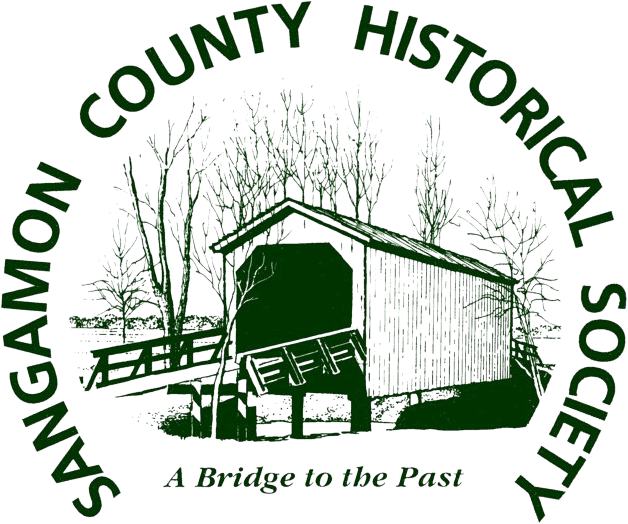In 1957, then Springfield mayor Nelson Howarth created a seven-member Historical Monuments Commission headed by Jim Bolinger, manager of the Leland Hotel. Members of the commission included attorney Frank R. Sullivan, George Cashman, curator of the Lincoln Tomb, Dorothy Drach, wife of State Senator George Drach, and Owen Darling, the city commissioner in charge of streets. Their first meeting involved discussion about what their job was, what a historic monument was, and thought their job was to put up signs directing visitors to Lincoln signs. They tossed around many ideas, including the thought that the Old State Capitol is a historic monument.
Twelve years earlier, Sullivan’s father, who had served in the Illinois State Legislature for several terms, was asked by Henry Converse, one of the leading attorneys in Springfield, to spearhead an effort in the House of Representatives to get the state to buy and restore the Old State Capitol building which at that point housed the Sangamon County courthouse. Converse long believed the building was an important part of the nation’s heritage and needed to be preserved.
The building was the seat of state government from1839 to 1876, was where Lincoln served his last term in the House of Representatives and where, in 1858, he delivered his famous House Divided speech to the Republican State Convention. Before a new courthouse could be built, and before Sangamon County could sell the old courthouse, Sangamon County voters had to approve the action. However, Sangamon County voters turned down the idea of building a new courthouse.
The defeat was a blow to Converse, who had been pushing for the acquisition and restoration of the building for decades.
By the time the Monuments Commission had its next meeting, Sullivan had drawn up a resolution to designate the building a historic site and work toward its restoration. His resolution recalled Converse’s comments from a speech made in 1923 titled The House of the House Divided. The Historical Monument Commission passed a resolution naming that as their project. That same year, the Commission held then first of what would turn out to be several public meetings that would take place over the next years to promote restoration of the Old Capitol.
By 1960, Sullivan learned that the issue had been brought to the attention of Otto Kerner who was running (and was later elected) governor. Kerner’s view was that “You cannot expect the State of Illinois to go around the state buying up old courthouses.” That didn’t stop Sullivan, who by this time had been elected chair of the Commission. Sullivan served as chair for four years, and recalled, with some dismay, that only five of the seven members would show up for meetings. And because they were always absent and despite promises to do so, two of the commission members never signed the old Capitol restoration resolution.
The years of inaction on the Commission’s project weighed heavy on Sullivan, so much so that it galvanized him to move on an idea that he had been thinking about for some time: forming a county-wide historical society in which a “group of like-minded people in the same organization would have the effect that individuals would not have individually.”
About three years before it was formally organized, Sullivan reserved the name “Sangamon County Historical Society” with the Secretary of State. At his urging, in 1961, the Monuments Commission sent out about 400 invitations to attend a meeting marking the centennial of the Stephen A. Douglas speech in Springfield. Sullivan arranged for Dr. Glenn Seymour, a history professor from Eastern Illinois and an expert on Douglas, to speak. Following the meeting, Sullivan appointed a committee of about 18 people and named Judge Benjamin DeBoice chairman of the committee to organize a Sangamon County Historical Society.
One of the first things DeBoice did was to appoint George Cashman to be secretary of the committee. [Cashman, who died in 1983, was curator and custodian of Lincoln’s tomb]. They had most of the preliminary meetings at George Cashman’s home out in Oak Ridge Cemetery and the historical society was organized as a result of that meeting.
Seven years later Sullivan was elected president of the Society. To Sullivan’s delight, in 1962 Governor Kerner signed the legislation to acquire the Old Capitol building.
The Society’s first logo, a drawing of the Old State Capitol, was adopted in 1962, underscoring its importance to the founders. The design was changed several years later to the present logo, a rendering of the Sugar Creek covered bridge at Pioneer Park in Chatham, where in 1816, Robert Pulliam built the first cabin in Sangamon County.
The first president of the Society was John Trutter, a Springfield native and the most prominent statewide of any Society president.
High on the early agenda for the Society was the preservation of the Executive Mansion. Built in the 1850s, the building had deteriorated by 1961 when Governor Kerner and his family moved in. Postponed maintenance, repair crises and general dilapidation were recurring problems at the Illinois Executive Mansion. In 1963, the Illinois House of Representatives voted to tear down the Governor’s Mansion, which was completed in 1855, sell the downtown block it sits on, and construct a new mansion somewhere in “a residential neighborhood” of Springfield. However, local preservationists, led by Dr. Barringer and the Sangamon County Historical Society, mobilized to support the mansion, and Murphy’s bill died in a Senate committee less than a week after its House passage.
At about the same time as the Society was founded in 1961, restoration work had begun at Clayville. To that end, the Society provided considerable support for its development. And during Sullivan’s presidency, the Society took stands in support of plans for the federal government taking over the management of the Lincoln Home and surrounding area. " The historic ambience of the home was under threat from further commercial encroachment. Society leaders worked with Congressman Paul Findley and Mayor Howarth in this successful effort," Scott pointed out.
The Society founders had a broader view of the purposes of the Society well beyond the preservation of one particular building and beyond preservation in general: finding a place to house historic papers and records, a desire that translated into taking an active role in developing and helping support the Sangamon Valley Room/Sangamon Valley Collection at the City of Springfield's Lincoln Library, an activity that continues to this day.

